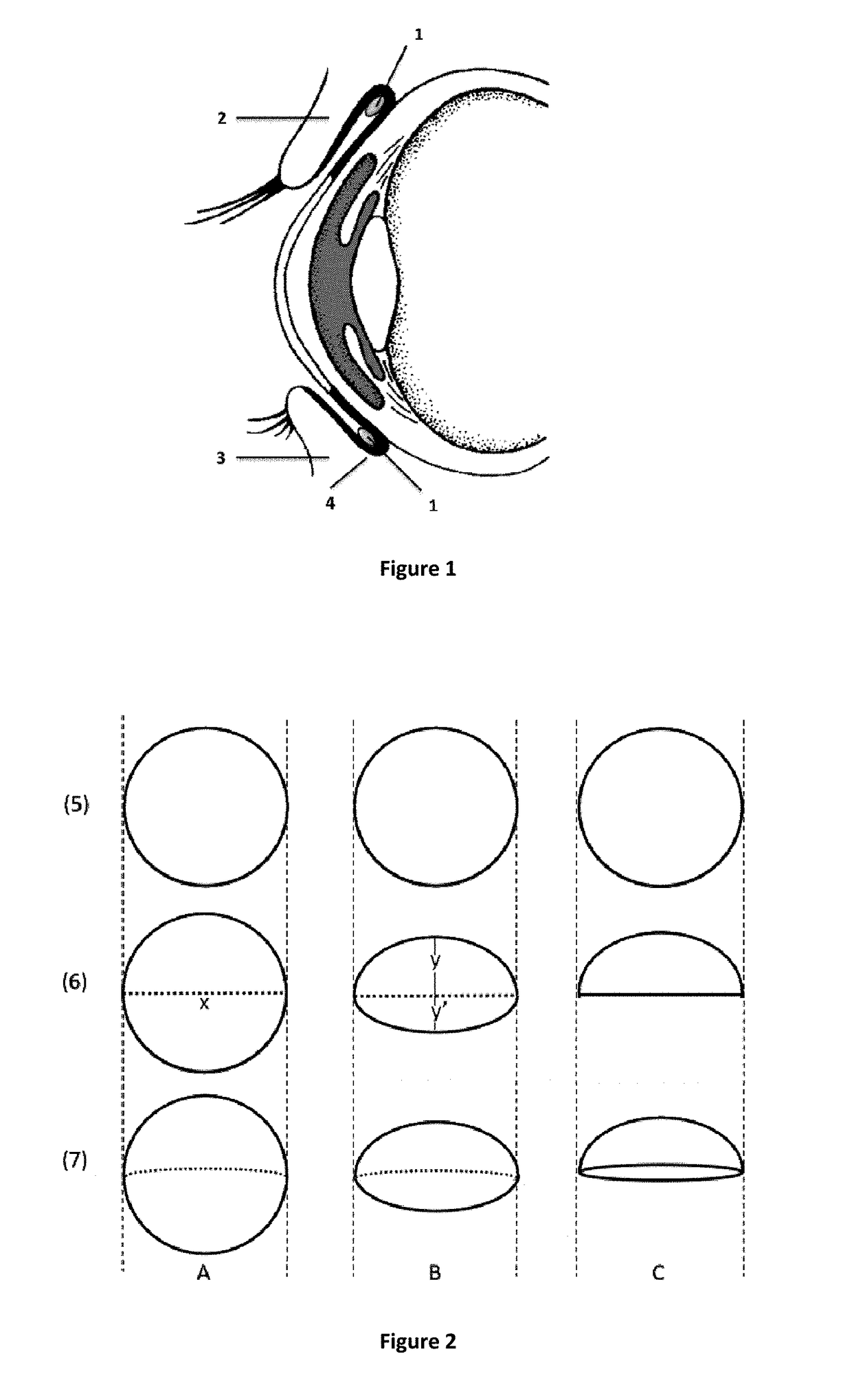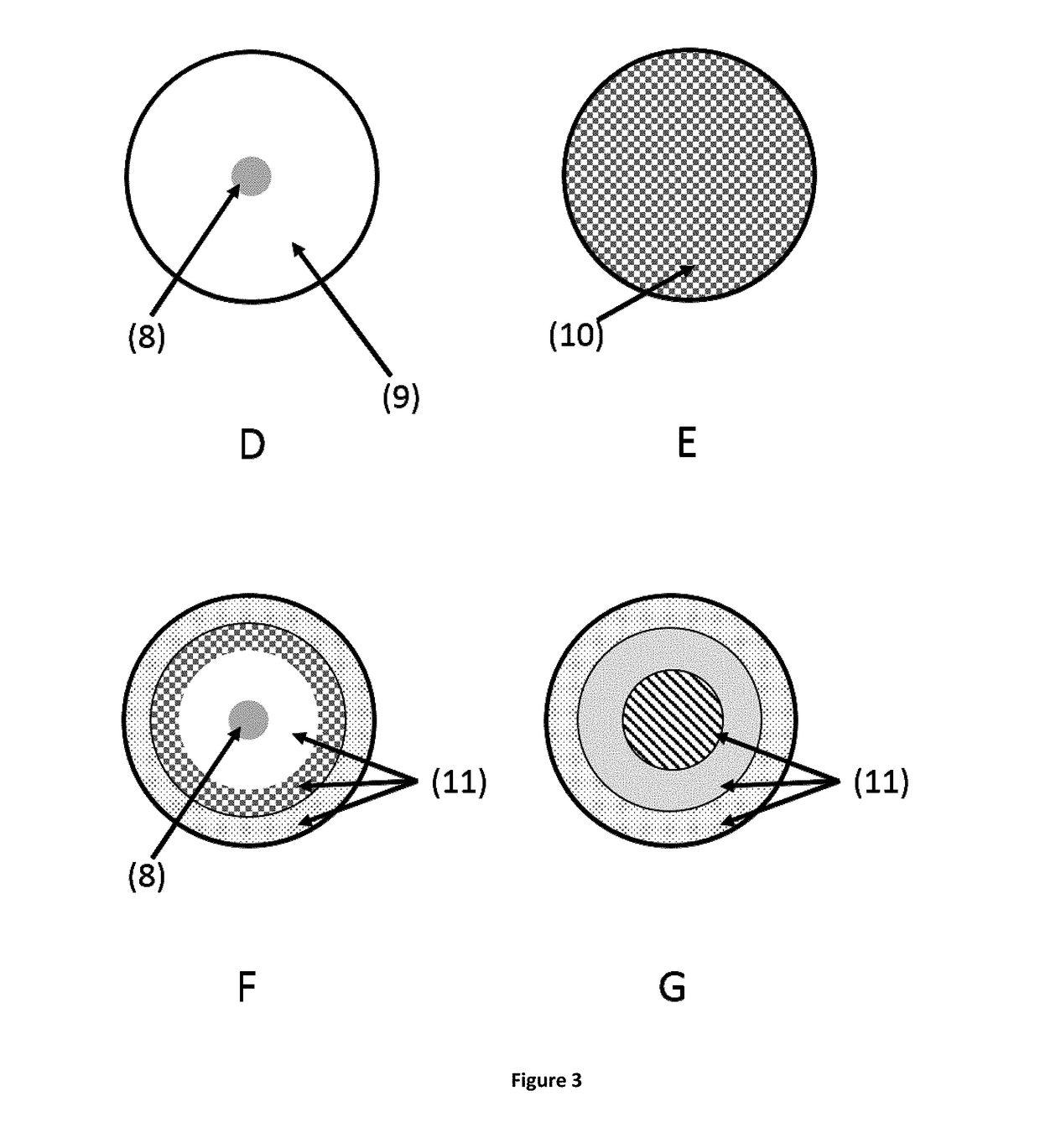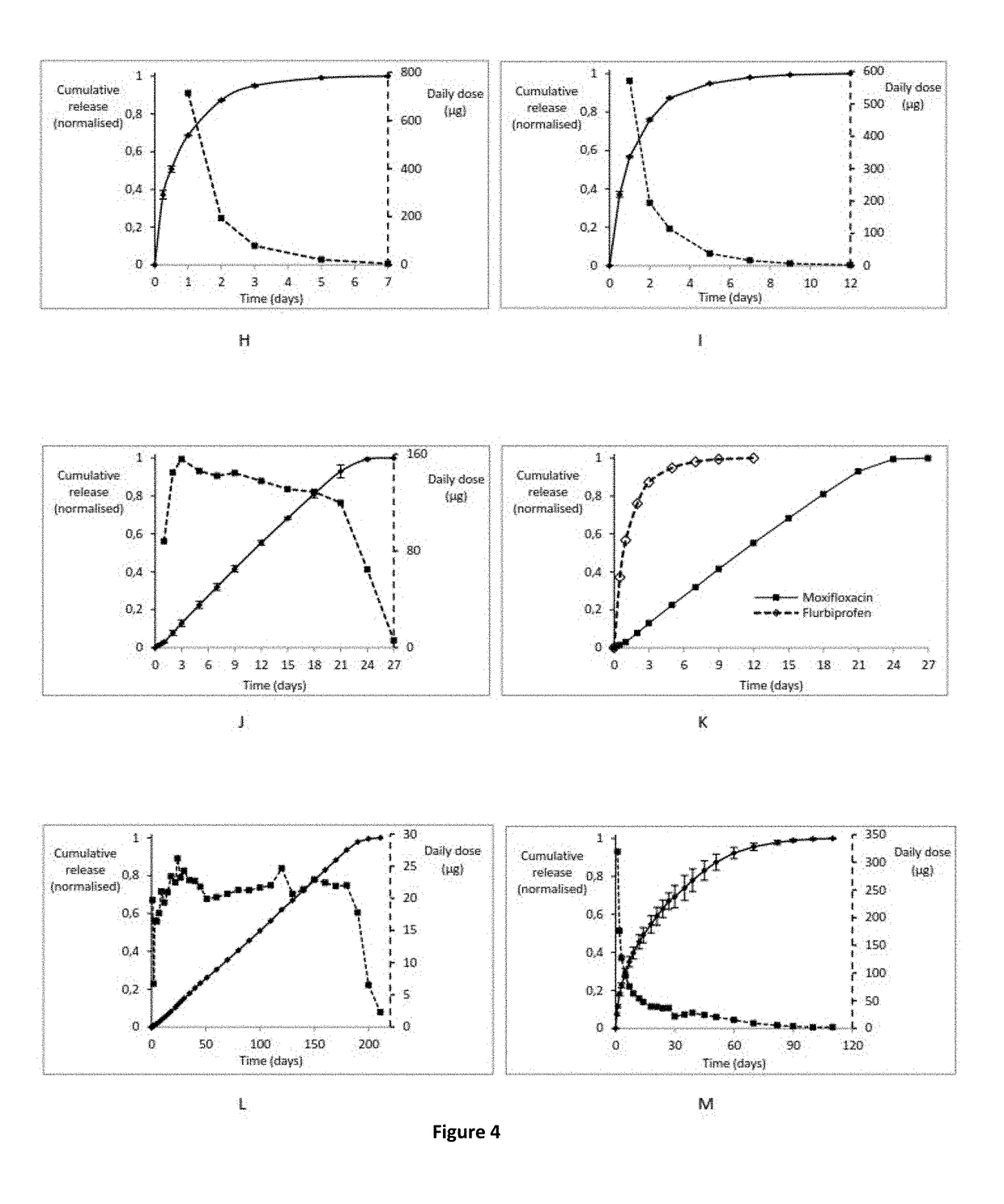Non-invasive ocular drug delivery insert technology
a technology of ocular drug delivery and insert, which is applied in the field of non-invasive ocular drug delivery insert, can solve the problems of high cost and achieve the effect of inhibiting the risk of displacement or expulsion
- Summary
- Abstract
- Description
- Claims
- Application Information
AI Technical Summary
Benefits of technology
Problems solved by technology
Method used
Image
Examples
example 1
[0185]A formulation of the ocular insert embodying the invention, Formulation 1, was prepared as follows: The copolymer used in this formulation was a low molecular weight polycaprolactone / polyethelyneglycol in a ratio of 75 / 25 (PCL / PEG; mass / mass). The drug moxifloxacin was mixed with the copolymer in a beaker under magnetic stirring at 70° C. for a few minutes. The drug percentage regarding the total mixture weight was 2% (mass / mass).
[0186]The ocular inserts embodying the invention were then prepared from that drug / polymer mixture with asymmetrical shape as represented in scheme B of FIG. 2. The average length of the large diameter was 5.8 mm while the small diameter measured 2.7 mm. The average weight of the ocular inserts of Formulation A was approximately 50 mg with approximately 1 mg of drug dispersed in the polymeric matrix.
[0187]Each insert of Formulation 1 was placed in phosphate-buffered saline solution (PBS) at 37° C. until all the drug was released to the aqueous media. ...
example 2
[0188]A formulation of the ocular insert embodying the invention, Formulation 2, is similar to Formulation 1 except that the drug entrapped in the polymer matrix was flurbiprofen instead of moxifloxacin.
[0189]The architecture, size and shape are the same applied on formulation 1. Therefore the average weight of the ocular inserts of Formulation 2 was also approximately 50 mg with approximately 1 mg of drug dispersed in the polymeric matrix. Each insert of Formulation 2 was placed in phosphate-buffered saline solution (PBS) at 37° C. until all the drug was released to the aqueous media. The flurbiprofen dissolved was quantified by an UV-Vis spectrophotometric method and the results shown a “Fickian” release where approximately 50% of the drug was released in the initial 24 hours and almost all of the entrapped drug was dissolved at day 5 of the dissolution study (FIG. 4I).
example 3
[0190]A formulation of the ocular insert embodying the invention, Formulation 3, was prepared as follows: The copolymer used in this formulation was a low molecular weight polycaprolactone / polyethelyneglycol in a ratio of 75 / 25 (PCL / PEG; mass / mass). 100 mg of Moxifloxacin was slightly compressed under 300 mbar for half a minute to form a tablet from which small portions of 3 mg were obtained. Each of these small tablets were then covered with melted copolymer to form the final ocular insert devices embodying the invention.
[0191]These ocular inserts embodying the invention in Formulation 3 were of an assymetrial shape as represented in scheme B of FIG. 2. The average length of the large diameter was 5.8 mm while the small diameter measured 2.7 mm. The average weight of the ocular inserts of Formulation 3 was 50 mg with approximately 3 mg of drug in a central core.
[0192]Each insert of Formulation 3 was placed in phosphate-buffered saline solution (PBS) at 37° C. until all the drug was...
PUM
| Property | Measurement | Unit |
|---|---|---|
| Fraction | aaaaa | aaaaa |
| Fraction | aaaaa | aaaaa |
| Fraction | aaaaa | aaaaa |
Abstract
Description
Claims
Application Information
 Login to View More
Login to View More - R&D
- Intellectual Property
- Life Sciences
- Materials
- Tech Scout
- Unparalleled Data Quality
- Higher Quality Content
- 60% Fewer Hallucinations
Browse by: Latest US Patents, China's latest patents, Technical Efficacy Thesaurus, Application Domain, Technology Topic, Popular Technical Reports.
© 2025 PatSnap. All rights reserved.Legal|Privacy policy|Modern Slavery Act Transparency Statement|Sitemap|About US| Contact US: help@patsnap.com



